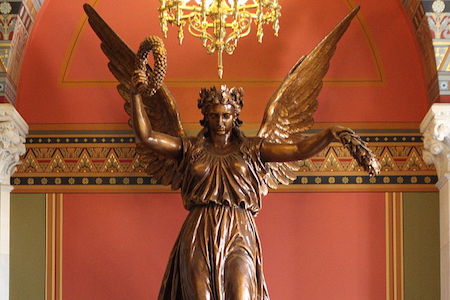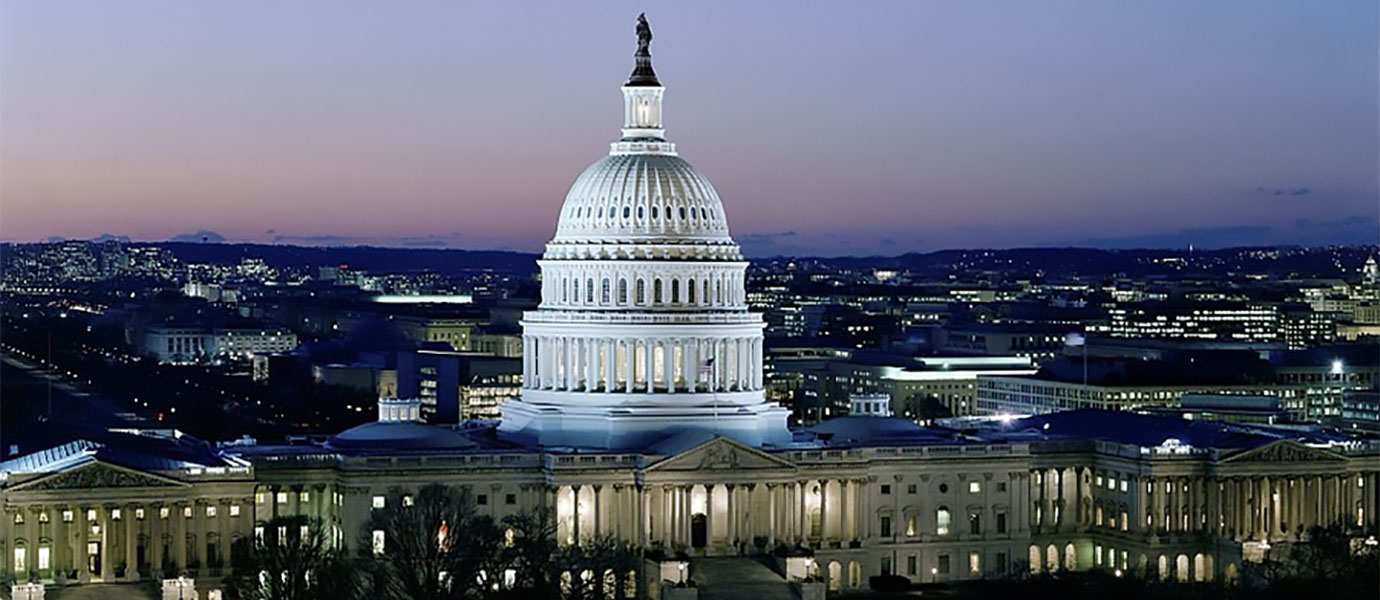
School
Students will view items important to Connecticut history, including statues of Nathan Hale, Prudence Crandall, William Buckingham, and the “Genius of Connecticut.” They can view flags carried into battle by Connecticut soldiers, learn about the legislative process in the House and Senate chambers, observe the proceedings of the General Assembly from the public galleries (when in session), and tour the Legislative Office Building. School groups can also visit the Connecticut Hall of Fame, which recognized distinguished Connecticut individuals throughout history.
supports classroom learning in:
Social Studies.
topics covered:
History, government, civics, historic figures, legislative branch, architecture.
contact info
Phone: 860-240-0222
INFO
ABOUT
Connecticut State Capitol
The Connecticut State Capitol, opened in 1878, stands in the picturesque setting of Bushnell Park. Designed by Richard M. Upjohn, a cathedral architect, this High Victorian Gothic style state house was designated a Registered National Historic Landmark in 1971. The tour will take students, scouts, homeschoolers, and campers through the East Atrium, Hall of Flags, Main Lobby, Capitol Concourse, and more. Tours of the Capitol are given only when the Legislature is not in Session.
contact info
Hrs: Mon.-Fri. 8AM-5PM.
HELPFUL LESSON PLAN(S)
Prepared by FieldTripDirectory.com
Legislature Lesson Plan
Field trips to the U.S. Capitol or state legislature can be a powerful learning experiences. Have your students study the history and structure of their state legislature or the federal government. How many members, how are they selected and how long do they serve? How are laws past and who are your representatives? What is the leadership and what are standing committees? When possible, make a reservation to visit your representative’s office.
View Lesson Plan>>
Camp
Campers will view items important to Connecticut history, including statues of Nathan Hale, Prudence Crandall, William Buckingham, and the “Genius of Connecticut.” They can view flags carried into battle by Connecticut soldiers, learn about the legislative process in the House and Senate chambers, observe the proceedings of the General Assembly from the public galleries (when in session), and tour the Legislative Office Building. Camp groups can also visit the Connecticut Hall of Fame, which recognized distinguished Connecticut individuals throughout history.
contact info
Phone: 860-240-0222
INFO
ABOUT
Connecticut State Capitol
The Connecticut State Capitol, opened in 1878, stands in the picturesque setting of Bushnell Park. Designed by Richard M. Upjohn, a cathedral architect, this High Victorian Gothic style state house was designated a Registered National Historic Landmark in 1971. The tour will take students, scouts, homeschoolers, and campers through the East Atrium, Hall of Flags, Main Lobby, Capitol Concourse, and more. Tours of the Capitol are given only when the Legislature is not in Session.
contact info
Hrs: Mon.-Fri. 8AM-5PM.
HELPFUL LESSON PLAN(S)
Prepared by FieldTripDirectory.com
Legislature Lesson Plan
Field trips to the U.S. Capitol or state legislature can be a powerful learning experiences. Have your students study the history and structure of their state legislature or the federal government. How many members, how are they selected and how long do they serve? How are laws past and who are your representatives? What is the leadership and what are standing committees? When possible, make a reservation to visit your representative’s office.
View Lesson Plan>>
Homeschool
Homeschool groups will view items important to Connecticut history, including statues of Nathan Hale, Prudence Crandall, William Buckingham, and the “Genius of Connecticut.” They can view flags carried into battle by Connecticut soldiers, learn about the legislative process in the House and Senate chambers, observe the proceedings of the General Assembly from the public galleries (when in session), and tour the Legislative Office Building. Homeschoolers can also visit the Connecticut Hall of Fame, which recognized distinguished Connecticut individuals throughout history.
topics covered:
History, government, civics, historic figures, legislative branch, architecture, social studies.
contact info
Phone: 860-240-0222
INFO
ABOUT
Connecticut State Capitol
The Connecticut State Capitol, opened in 1878, stands in the picturesque setting of Bushnell Park. Designed by Richard M. Upjohn, a cathedral architect, this High Victorian Gothic style state house was designated a Registered National Historic Landmark in 1971. The tour will take students, scouts, homeschoolers, and campers through the East Atrium, Hall of Flags, Main Lobby, Capitol Concourse, and more. Tours of the Capitol are given only when the Legislature is not in Session.
contact info
Hrs: Mon.-Fri. 8AM-5PM.
HELPFUL LESSON PLAN(S)
Prepared by FieldTripDirectory.com
Legislature Lesson Plan
Field trips to the U.S. Capitol or state legislature can be a powerful learning experiences. Have your students study the history and structure of their state legislature or the federal government. How many members, how are they selected and how long do they serve? How are laws past and who are your representatives? What is the leadership and what are standing committees? When possible, make a reservation to visit your representative’s office.
View Lesson Plan>>
